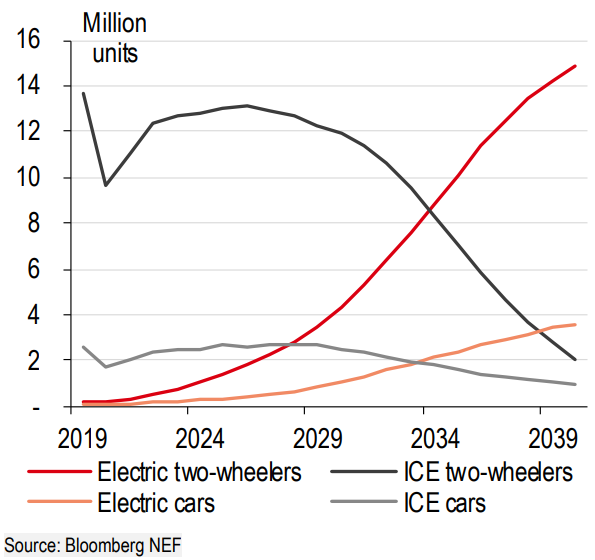HÀ NỘI: The rise of electric vehicles (EVs) in Việt Nam, is already reducing carbon emissions and producing green economic growth, according to a report released by HSBC Vietnam.
Local EV makers have been particularly successful in electrifying two-wheelers (E2Ws), but growth will eventually slow while four-wheel cars pick up the slack. Although it is difficult to project the future of a rapidly evolving industry, it is estimated that Việt Nam’s annual E2W and electric car sales could rise from less than one million in 2024 to over 2.5 million by 2036.
Crucially, Government policies are encouraging EV production and consumption, but as the report says, more investment is required in infrastructure and critical supply chain segments, such as rare earths. Traditionally, Japanese firms have led the two-wheel market in Việt Nam, but local EV players, such as VinFast, are rapidly growing, in partnership with Chinese EV and battery companies.
VN’s green energy transition
Energy transition has been a key focus in Asia in recent years and Việt Nam is no exception. As early as 2021 during the COP26 summit, Việt Nam set a target to achieve carbon net zero by 2050. In December 2022, the G7 announced a package of US$15.5 billion to assist the country’s decarbonisation efforts. Last May, the long-anticipated Power Development Plan 8 (PDP8) for 2021-30 was released, setting out a roadmap for Việt Nam’s renewable energy goals.
Fortunately, the rise of electric vehicles (EVs) is contributing to carbon net zero and propelling a sustainable source of long-term economic growth for Việt Nam. Local EV makers have been particularly successful in electrifying two-wheelers.
Today, Việt Nam’s electric two-wheeler (E2W) market is the largest in ASEAN and second-largest worldwide, just behind China. Looking ahead, Việt Nam’s EV market has ample room for further growth. While projecting the future of a rapidly evolving industry is difficult, the estimate is that Việt Nam’s annual combined E2Ws and electric car sales could rise from less than one million in 2024 to over 2.5 million by 2036 — a rough sense of this industry’s market potential in Việt Nam.
 |
| S |


